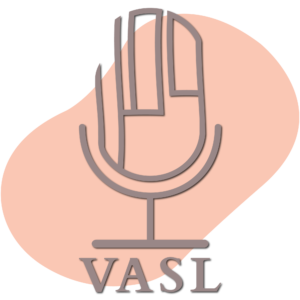Hi there,
It is a beautiful sunny morning, and I am feeling inspired to share some thoughts with you. Today, I want to delve into the art of acting on incomplete information, but before as we do every single time, let’s take an inventory check.
Weekly Inventory Check
June will be officially finished today, and I want you to reflect on what you have accomplished this month. Consider what can be improved and what cannot. It’s been more than a year since we started this exercise, and I hope it has been as valuable to you as it has been to me. For me, it’s been an amazing journey, continually looking for ways to improve and reflecting on my progress.
Now, on to the topic of the day:
Embracing the Art of Acting on Incomplete Information
This week, William, my friend and I discussed this concept in depth. William believes that perfect information is impossible to obtain, and I wholeheartedly agree. While incomplete information is challenging to get, the real struggle lies in the desire for more and more data before deciding.
In my work with data, I often encounter this issue. Everyone wants absolute clarity before deciding, but sometimes, we will never have complete information. Data can be limited and even skewed, making it difficult to know if the information we have is accurate.
A prime example of acting on incomplete information is the government. We often criticize governments for not handling situations correctly, assuming it’s easy to manage a large population. However, governments operate daily on incomplete information, constantly balancing trade-offs between waiting for more data and making timely decisions.
Organizations face similar challenges. Setting up a robust data infrastructure takes time, and the results are not immediate. Yet, organizations often want instant answers on how to improve. It’s a delicate balance between waiting for more information and deciding with the data at hand.
I want to emphasize that you will never have complete information. The key is to act on the information you have, with a well-thought-out decision-making process. This doesn’t mean making impulsive decisions but finding a balance between thorough research and timely action. At some point, you must make a decision.
Want More?
· Explore strategies for navigating decision-making with incomplete information in startup environments: Acting with Incomplete Information in a Startup.
· “Discover practical tips for effectively working with incomplete information: Working with Incomplete Information
· Explore strategies for making decisions amidst uncertainty and incomplete evidence: Uncertainty: Making Decisions Without All the Evidence
Reel of the Week
Check this out! The 5 Second Rule is a concept introduced by motivational speaker and author Mel Robbins. It suggests that when you have an instinct to act on a goal or make a decision, you must physically move or take action within five seconds. The idea is that if you hesitate longer than five seconds, your brain may talk you out of it, leading to inaction. The rule is a simple and effective tool to overcome procrastination and self-doubt by encouraging immediate action.
Instagram post by @thisisahadbudhani
The Weekly Vasl Podcast
Our episode on Starting with something new with the limited knowledge, is it good or bad? is out now. Join us for a compelling podcast session this Friday as we dive into the complexities of decision-making when faced with incomplete information and wavering confidence. Whether you’re on vacation or tackling your daily grind, this discussion with William and I is one you won’t want to miss. We explore the critical question of whether it’s better to act now or wait for more clarity. Share your thoughts in the comments and become part of the conversation on navigating uncertainty in life and work.
Thoughts to Leave You With
In the realm of decision-making, waiting for perfect information can often lead to missed opportunities. Instead, consider this: while complete clarity may be elusive, thoughtful action based on available information can propel you forward. Strive for a balance between thorough research and decisive action, ensuring that every step is grounded in careful consideration. Remember, progress often hinges not on having all the answers, but on courageously moving forward with the best information at hand.
Hi there,It is a beautiful sunny morning, and I am feeling inspired to share some thoughts with you. Today, I want to delve into the art of acting on incomplete information, but before as we do every single time, let’s take an inventory check.Weekly Inventory CheckJune will be officially finished today, and I want you to reflect on what you have accomplished this month. Consider what can be improved and what cannot. It’s been more than a year since we started this exercise, and I hope it has been as valuable to you as it has been to me. For me, it’s been an amazing journey, continually looking for ways to improve and reflecting on my progress.Now, on to the topic of the day:Embracing the Art of Acting on Incomplete InformationThis week, William, my friend and I discussed this concept in depth. William believes that perfect information is impossible to obtain, and I wholeheartedly agree. While incomplete information is challenging to get, the real struggle lies in the desire for more and more data before deciding.In my work with data, I often encounter this issue. Everyone wants absolute clarity before deciding, but sometimes, we will never have complete information. Data can be limited and even skewed, making it difficult to know if the information we have is accurate.A prime example of acting on incomplete information is the government. We often criticize governments for not handling situations correctly, assuming it’s easy to manage a large population. However, governments operate daily on incomplete information, constantly balancing trade-offs between waiting for more data and making timely decisions.Organizations face similar challenges. Setting up a robust data infrastructure takes time, and the results are not immediate. Yet, organizations often want instant answers on how to improve. It’s a delicate balance between waiting for more information and deciding with the data at hand.I want to emphasize that you will never have complete information. The key is to act on the information you have, with a well-thought-out decision-making process. This doesn’t mean making impulsive decisions but finding a balance between thorough research and timely action. At some point, you must make a decision.Want More?· Explore strategies for navigating decision-making with incomplete information in startup environments: Acting with Incomplete Information in a Startup.· “Discover practical tips for effectively working with incomplete information: Working with Incomplete Information· Explore strategies for making decisions amidst uncertainty and incomplete evidence: Uncertainty: Making Decisions Without All the EvidenceReel of the WeekCheck this out! The 5 Second Rule is a concept introduced by motivational speaker and author Mel Robbins. It suggests that when you have an instinct to act on a goal or make a decision, you must physically move or take action within five seconds. The idea is that if you hesitate longer than five seconds, your brain may talk you out of it, leading to inaction. The rule is a simple and effective tool to overcome procrastination and self-doubt by encouraging immediate action. Instagram post by @thisisahadbudhani The Weekly Vasl PodcastOur episode on Starting with something new with the limited knowledge, is it good or bad? is out now. Join us for a compelling podcast session this Friday as we dive into the complexities of decision-making when faced with incomplete information and wavering confidence. Whether you’re on vacation or tackling your daily grind, this discussion with William and I is one you won’t want to miss. We explore the critical question of whether it’s better to act now or wait for more clarity. Share your thoughts in the comments and become part of the conversation on navigating uncertainty in life and work.Thoughts to Leave You WithIn the realm of decision-making, waiting for perfect information can often lead to missed opportunities. Instead, consider this: while complete clarity may be elusive, thoughtful action based on available information can propel you forward. Strive for a balance between thorough research and decisive action, ensuring that every step is grounded in careful consideration. Remember, progress often hinges not on having all the answers, but on courageously moving forward with the best information at hand.Powered by beehiiv The Weekly Vasl


